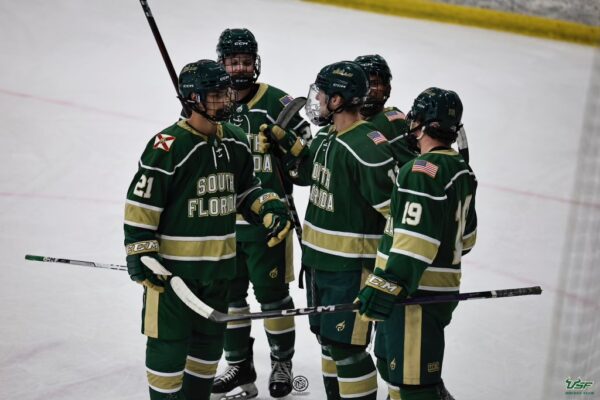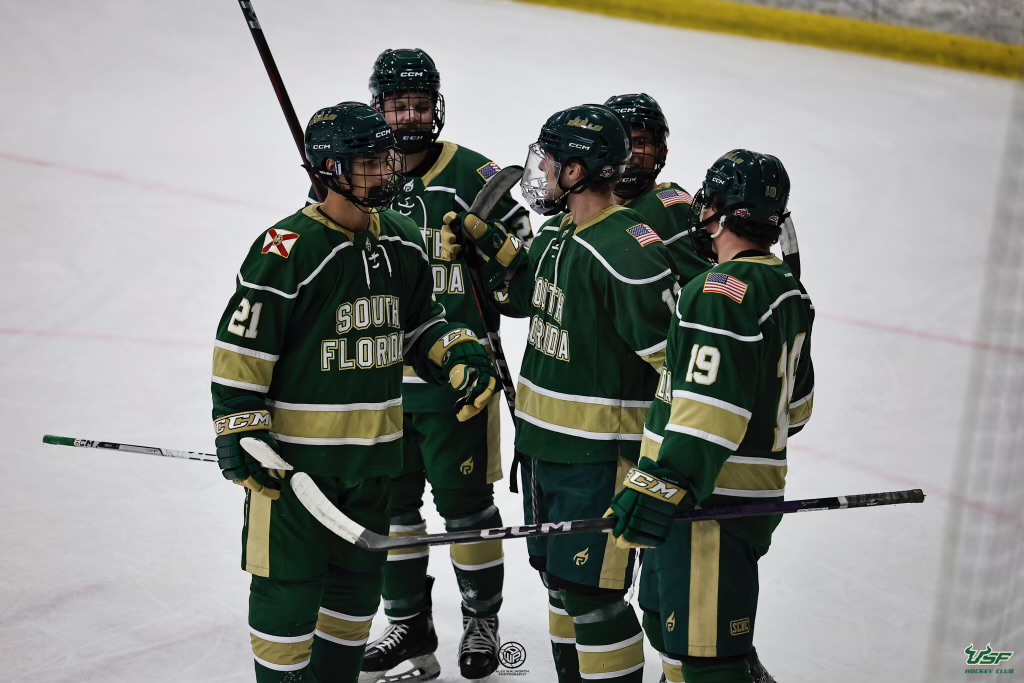 USF student organizations saw cuts of around half from requests to allocations. SPECIAL TO THE ORACLE / JACKSON KELLER
USF student organizations saw cuts of around half from requests to allocations. SPECIAL TO THE ORACLE / JACKSON KELLER
More than 350 student organizations at USF are feeling the squeeze this year after the Student Government slashed budgets by 50% to cover a multimillion-dollar campus deficit.
The cuts — approved in the USF SG Senate Budget Bill for Fiscal Year 2025-26 — affect every registered student organization on campus, from academic clubs and councils to sports teams.
The total allocation for all organizations dropped to $988,394 this school year — down from over $1.3 million the previous year, according to records obtained by The Oracle.
The Campus Allocation Funding Committee, a student-run body that manages the budgeting process, voted unanimously in March to cut all organization budgets to cover a $2.6 million shortfall in university finances.
In the 2025-26 allocations, “high competition” sports clubs, such as the Men’s Ice Hockey Club, received around $10,000, while “moderate competition” teams, such as the Women’s Ice Hockey Club, received close to $7,000.
Other student groups, including Turning Point USA at USF and Motivating Black Students into Medicine, now operate with less than $1,000 per year.
For USF’s sports clubs, like the Men’s Ice Hockey Club, the cuts have become a symbol of that strain.
Related: USF faces Memphis in crucial conference clash
Clubs hit hard as costs climb
Jackson Keller, the president of the men’s ice hockey club, said the club received $10,350 from the university this year, a drop of around $5,000 from last year.
The club originally submitted a request to the CAFC for $116,000, which reduced it to $50,000 before sending it to SG — ultimately approving $10,350.
In a July 14 announcement, the team revealed that it had rejoined the American Collegiate Hockey Association Men’s Division III.
This created “two different programs” under the same sports club umbrella — one at the M3 level and one at D2 — both competing regionally and nationally.
Between equipment, travel and rising rink costs, Keller said the club’s total expenses now reach far beyond its allocation.
“The funding that they give us doesn’t even cover our first semester practices,” Keller said. “That requires us to find external funding.”
Sponsorship limits and rising expenses add to strain
Keller said the club acquired a sponsorship with Celsius last year. However, since Celsius is under PepsiCo, the sponsorship was not permitted under USF’s partnership with the Coca-Cola Co.
To fill the gap, the team now has to charge new members $3,000 and returning members $2,800, which Keller said still only covers a fraction of the costs.
“We don’t have the luxury to pay coaches because we can’t even afford the ice that we use,” Keller said.
Keller said costs have ballooned, especially when the team has to travel to use the AdventHealth Center Ice rink in Wesley Chapel as its practice home.
While the team’s success hasn’t slowed — with an 8-2 record this season and just shy of a conference title last year — Keller worries the financial strain could eventually catch up.
“It’s really hard to gain funding, especially when we’re getting cut by the school,” he said.
Related: USF’s BOT approves presidential finalist for BOG confirmation
How is funding divided?
Alfred Gentilini, the director of Campus Recreation and Wellness, said the funding process follows a structured review system that ranks clubs based on their level of competition and involvement.
Gentilini said the process ensures all funding stays within university policy and is “applied across all sport clubs” in a fair and equal manner.
“USF is not in a position to fully fund all student organizations,” he said. “Some of the higher-cost clubs, such as ice hockey, are disproportionately impacted by these limitations.”
Student Government defends cuts, points to flat fee
Emma Goodwin, SG’s Tampa governor, said this year’s funding cuts weren’t directed at any specific group.
“Every club is exactly the same,” Goodwin said. “When we come up with the percentage deducted from the total, that’s the same for all clubs.”
She said allocations stem from the Activity and Service Fee — a mandatory charge students pay each semester that funds nearly all campus programs, organizations and services.
For fiscal year 2025-26, the Tampa campus was allotted just over $17 million in A&S funding, according to official records.
Of that amount, just over $13 million was distributed to student programs and services, including Recreation & Wellness and the Marshall Student Center. Just over $2 million was set for SG operations and just under $1 million was reserved for organizations.
The remaining funds were placed in reserve accounts for emergency funding and future use.
Goodwin said those numbers make clear why student organizations often feel the pinch first.
“Payroll has to be funded first, and then everything else comes second,” she said. “Whatever is left, it goes to student organizations.”
USF leaders urged to boost funding
Goodwin said SG has been pushing the USF administration to recognize the strain.
She said her office presented a detailed financial breakdown to USF President Rhea Law and Provost Prasant Mohapatra, showing that the funds available under A&S fall short of what’s needed to sustain campus programs.
“We requested more money to support our departments and student organizations,” she said. “They were good at listening to us, but they haven’t really done anything yet.”
She said that, realistically, to “fund everything the way people want it to be funded,” SG would need around $22 million.
“[Law and Mohapatra] liked our ideas,” Goodwin said. “But of course, they couldn’t promise me anything.”
As a result, Goodwin said SG had no choice but to apply reductions across all clubs and funding councils.
“We are students ourselves and would love for them to get funding,” she said. “I don’t think [the administration] is going to actually do anything until enough people complain about it.”

